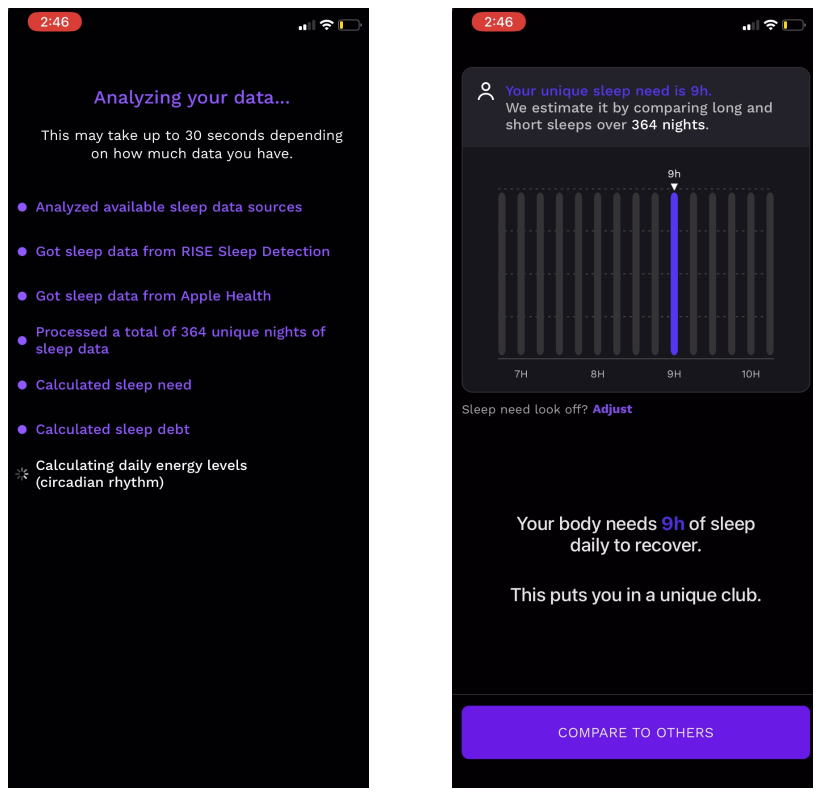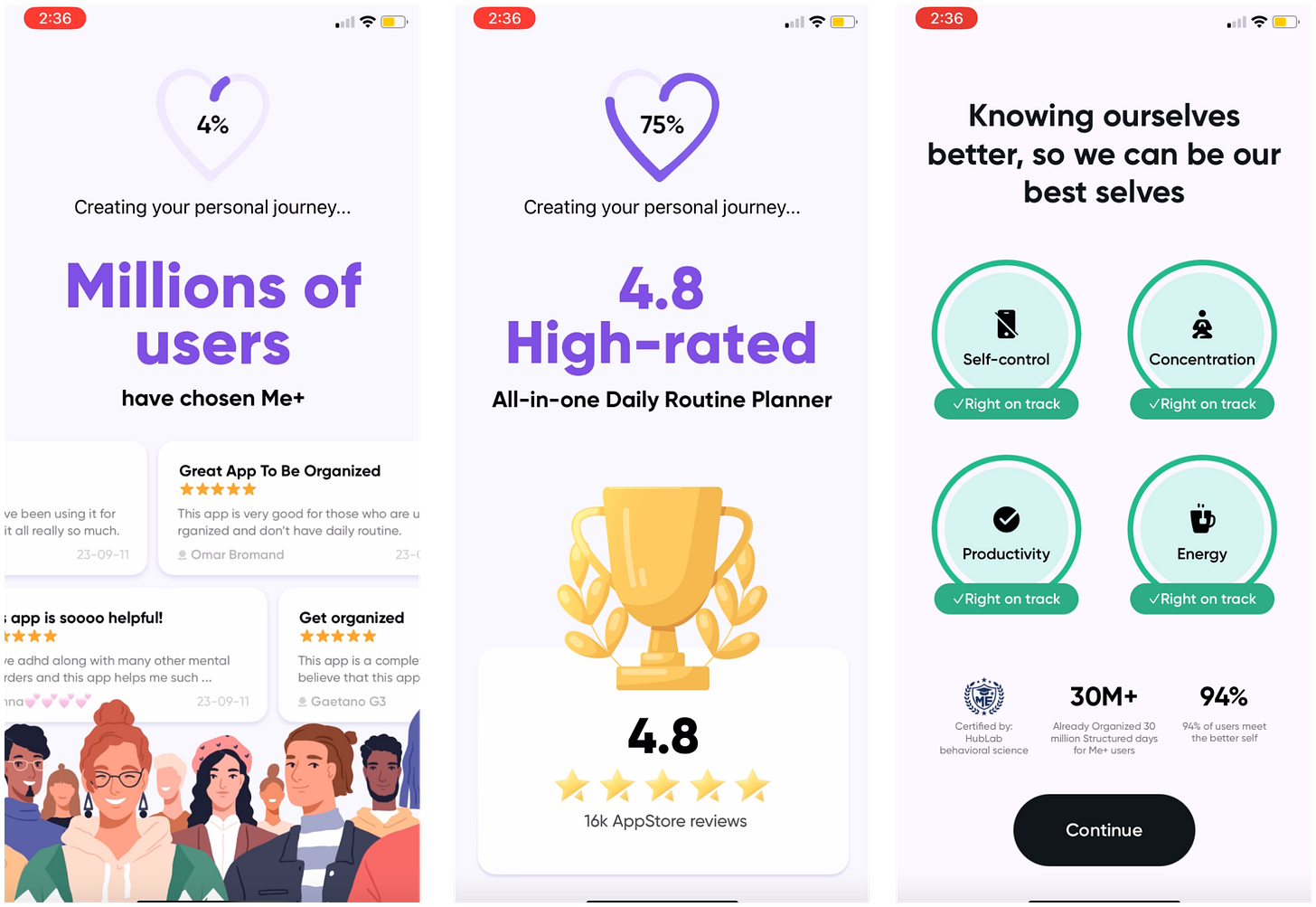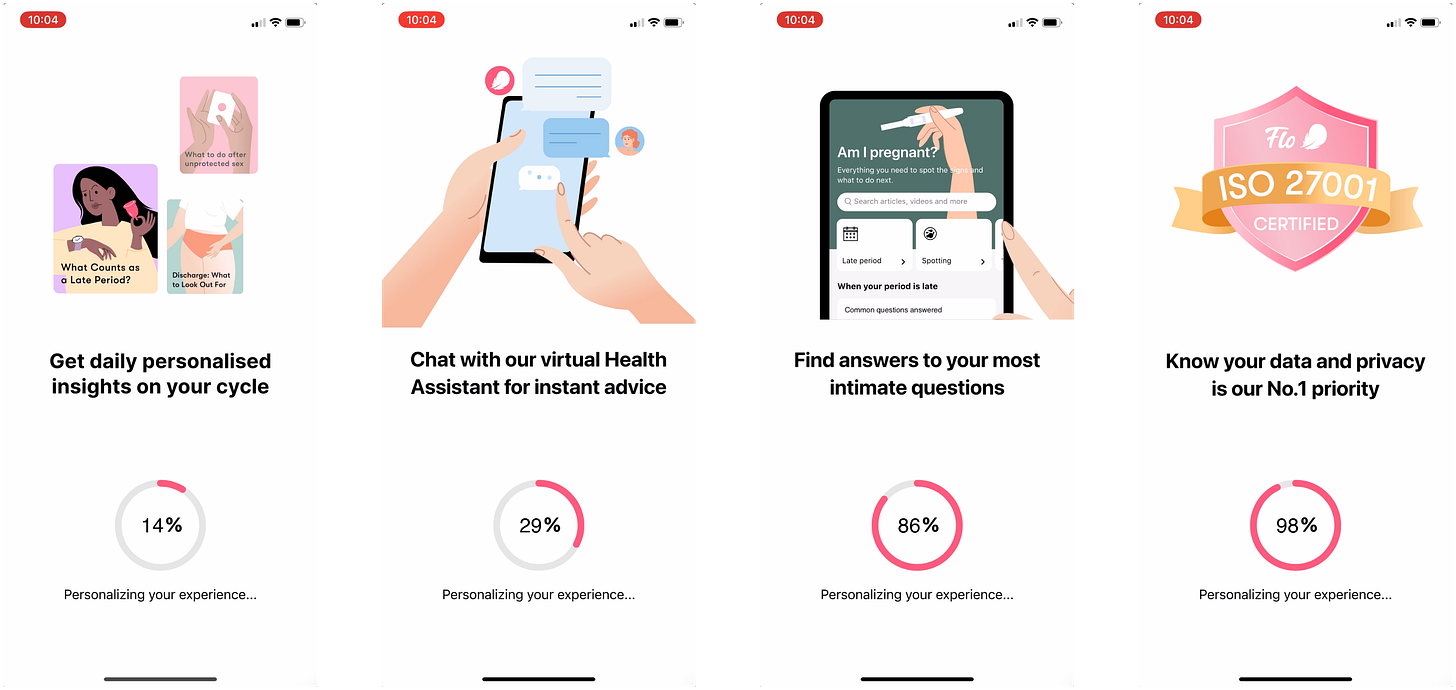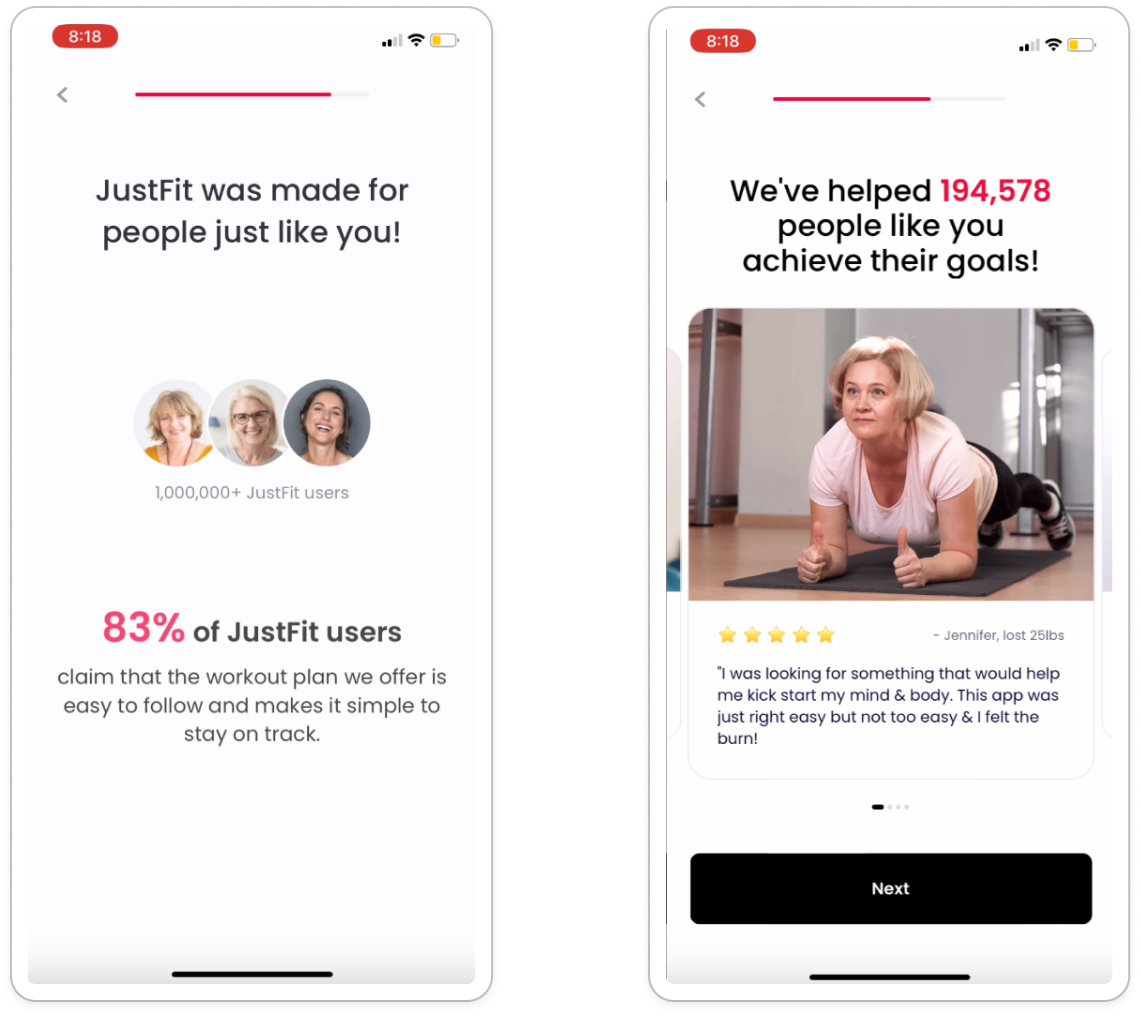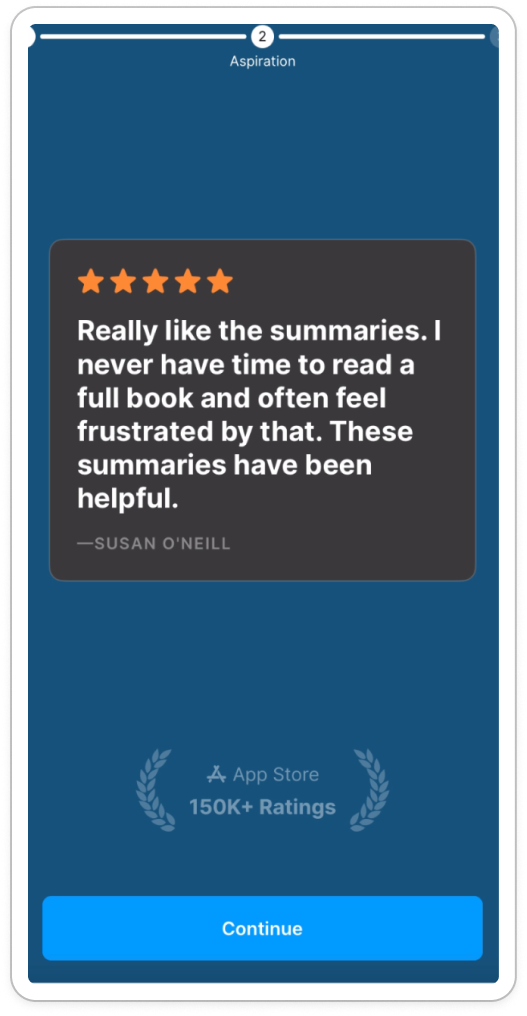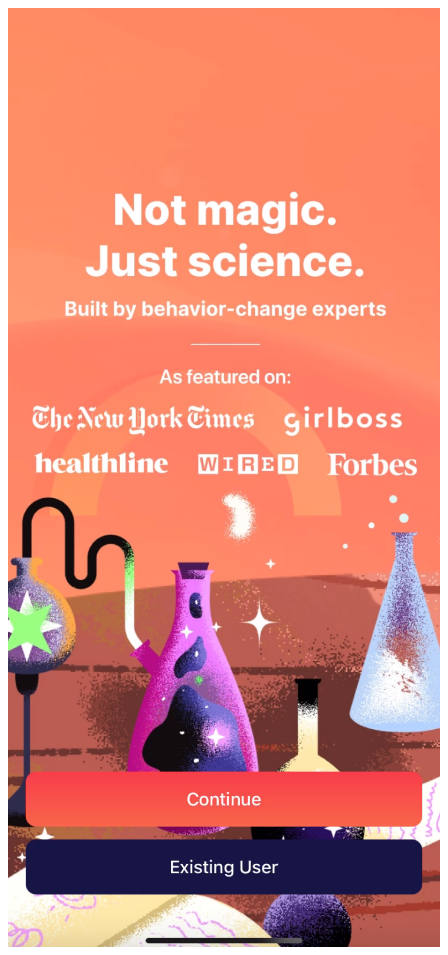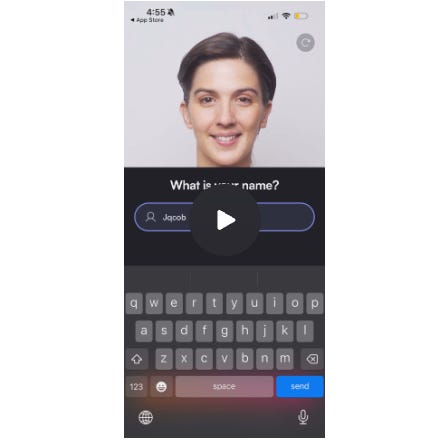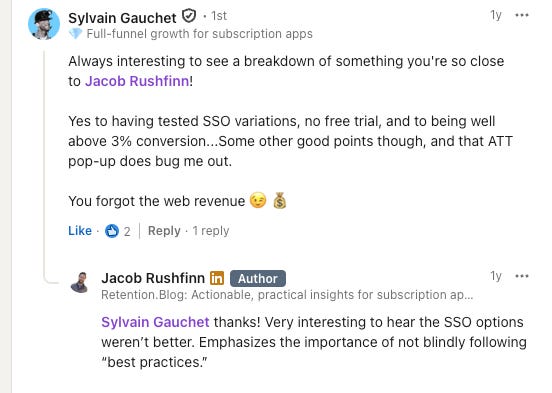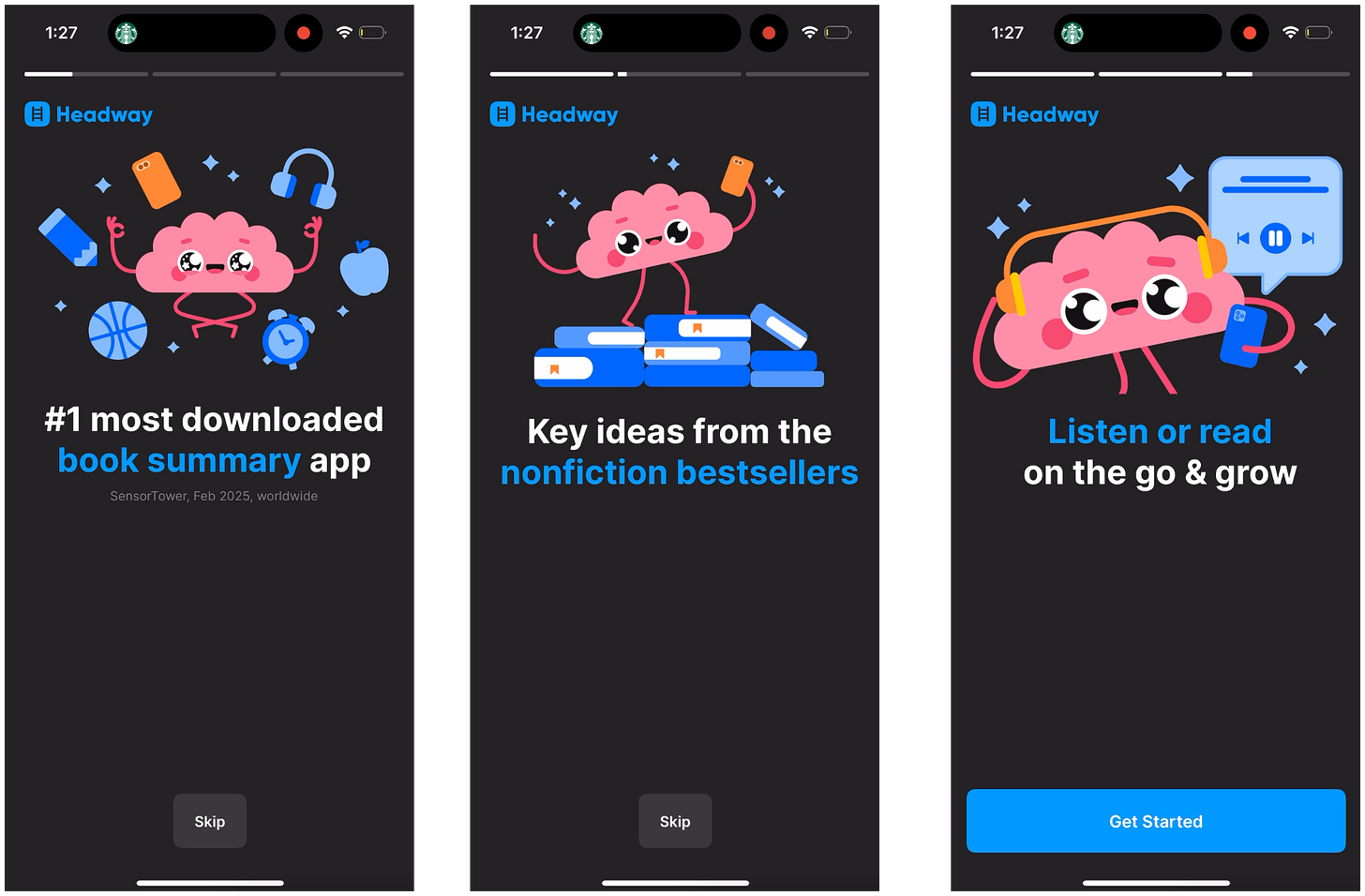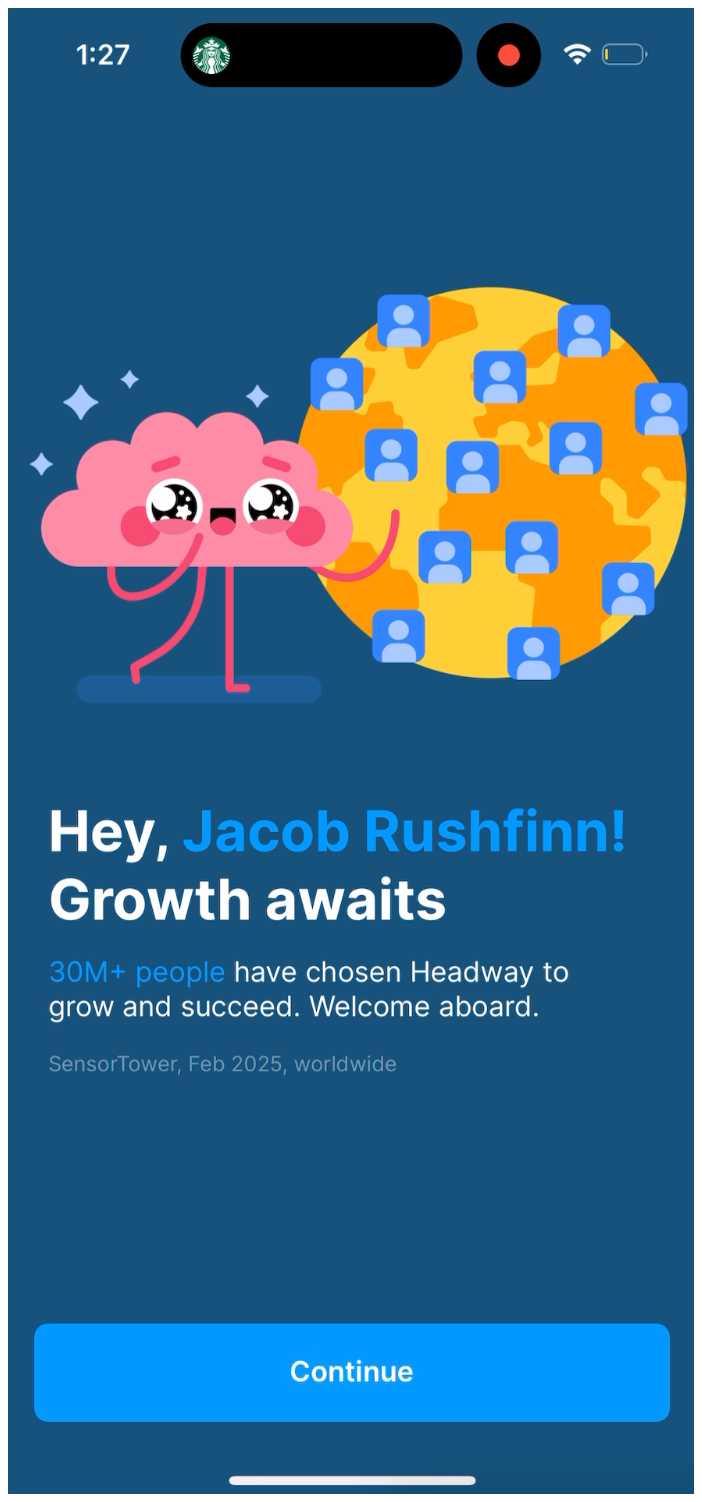10+ tests for onboarding
Your onboarding builds intent for you paywall
Hey there, it’s Jacob at Retention.Blog 👋
I got tired of reading high-level strategy articles, so I started writing actionable advice I would want to read.
Every week I share practical learnings you can apply to your business.
What should we test next in onboarding?
I’ve got some ideas for you!
What type of personalization do you have?
A lot of apps ask about user goals, but don’t reinforce that they can help those goals.
Instead, try this:
Ask about a user’s goals
Follow up on those specific goals to dig in more on why they are important
Then show a screen saying how you help support that secondary response
And you can also follow up again, saying how you support the overall goal as well:
There’s still time! Check out App Promotion Summit NYC on September 18th! ➡️
💡 Ariel Michaeli will share his State of the App Industry Report - always informative.
Last year I learned subscription apps are 5% of the total apps in the app store, but make up 50% of the revenue!!
Want to know how AI is changing consumer subscriptions?
🦻 Listen to Phil Carter explain the "tourist" effect and how the fixed costs of LLMs change your business.
Prefer conversation to being talked at?
🤖 Join a roundtable w/ Patrick Falzon, CEO of The App Shop, to learn how to use AI to grow.
He's built automated AI systems to power their user acquisition.
Oh yeah, I'm also speaking. That's cool too, I guess...
I'll show how top apps have evolved their onboarding flows over time and how you can learn from their experiments.
Will I see you at APS NYC? Click here to see the full agenda and register →
Ask users some questions that are relevant to your app and then use that data to show a semi-personalized response.
The example above is more segmentation than personalization.
Here is a great personalization and hook all in one from Opal:
This is all from user inputs. I believe it’s a combination of average screen time and age.
If we want to get even more personalized, check out this response from RISE.
RISE Sleep science pulls data from your device and Apple Health (I believe?) to calculate sleep debt.
Okay, so figuring out ways to add more personalization into your app is often a good test. And even better if it communicates the core value prop of your product
Loading Screens
Before loading your paywall, show a loading screen that communicates the value of your product, shows that you’re creating a personalized experience for your users, and maybe shows some testimonials.
Generally, these work and are net positive if done decently.
This multi-step loading has become popular to break down the different “elements” of the app:
Other apps focus more on social proof:
Flo likes to reinforce their features and benefits:
Get a bunch more loading screen test ideas here:
Social Proof
Have you heard of Mimetic Theory?
It proposes that human desire is not spontaneous but imitative (mimetic), meaning we desire things because others desire them.
It was developed by René Girard. I tried reading one of his books, but I didn’t make it very far…
This is why things like social proof are effective.
So why don’t you try adding some social proof to your app?
You can tell your users that lots of other people are already using your app:
Or you can say one other person really loves it!
Social proof can also be press mentions:
And no need to get specific and tell people exactly when the article came out… 🙂
I just talked about adding video last week, so I won’t rehash that, but you can read more here:
How do you let people log in or create an account?
Generally, SSO options are waaay easier for people to use and can boost conversion, but not every time!
I noticed Babbel didn’t have SSO as a default and found that odd.
But apparently, they tested it and it didn’t win!
Still, having SSO account creation options is a no-brainer to try if you don’t right now.
What do the first screens in your app look like?
Do they entice people to get started, or do they add too much friction?
Headway copied the Instagram Story style of tapping through screens.
There is huge value in using widely known UI patterns that people instantly understand.
I’ve heard from others that this IG Story style was a successful experiment.
We talked about personalization earlier, but everyone likes to read their own name:
Make me feel special!
What happens after you show your paywall?
Does your onboarding flow end?
The job isn’t done. You need to convince someone not to immediately cancel their trial or subscription.
How do you do that?
Imprint does a great job of continuing to guide users post-paywall:
Imprint has built an awesome new user experience that doesn’t just drop users into the home screen without any guidance.
They transition you nicely into your first lesson and educate you on the app in the process.
No, this isn’t simple one screen change. But bigger wins take bigger effort.
Don’t be afraid to take big swings.
You want more test ideas?!
Well, sorry. This is all I’ve got for you this week. Maybe in a few more weeks I’ll put together some more possible tests for you.
📣 Want to help support and spread the word?
Go to my LinkedIn here and like, comment, or share my posts.
OR







